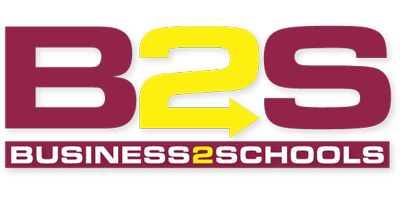Recycling business equipment to reinvigorate education
For far too long, used office furniture and business equipment has ended up in landfills. Now an inspirational young charity is using ArcGIS to enable businesses to donate their unwanted items to local schools, helping to close the digital divide, reinvigorate pupils’ learning and reduce unnecessary waste.
Over 4,000 schools in the UK and Ireland have registered for donations online via an intuitive ArcGIS web app.
Over 14,000 devices have been donated and allocated to the most appropriate schools using ArcGIS analysis.
Thousands of laptop donations to schools have been facilitated through an ArcGIS web app and BBC campaign.
The Challenge
Whenever large businesses refresh their offices or move to new premises, they dispose of hundreds of desks, chairs, computers and other items that are far superior in quality to those used by schools just a few miles away. Many organisations also replace their laptops every three to five years, discarding devices that are significantly more powerful and versatile than the out-dated computers in schools. Business2Schools wanted to address this imbalance, by diverting perfectly good furniture and technology away from landfills and into classrooms.
“If schools do not have to invest in furniture and technology, so much more can be invested in teaching.”
Lindsey Parslow, CEO, Business2Schools
The Solution
Business2Schools’ CEO Lindsey Parslow contacted Esri UK for advice when the charity was little more than a good idea. Recognising the huge potential of the initiative, Esri UK helped Parslow to embed GIS into core operating procedures so that the embryonic organisation’s vision could be realised as efficiently as possible. “Esri UK has been invaluable,” Parslow says. “Without Esri UK’s support and the ArcGIS technology, I don’t think we would be where we are today.”
ArcGIS fulfils four vitally important roles at Business2Schools. Firstly, an ArcGIS web app, embedded in the charity’s website, allows schools to register online and create a wish list for the furniture and technology that they would love to receive. All the relevant data is collated automatically by ArcGIS in a single spatial database, without any manual data handling.
Next, ArcGIS is used to locate the registered schools that are nearest to the organisations that have equipment to donate. When the postcode of the business is entered, the charity can immediately see how many registered schools are in the vicinity and expand or shrink the catchment zone to include more or fewer schools depending on the quantity of equipment available. Once the catchment zone is set, ArcGIS exports the email addresses of all head teachers in the zone, so that the charity can easily send them the inventory of available equipment.
Business2Schools also uses ArcGIS to undertake analysis to help it determine the best way to allocate high-demand items, based on need and location. For example, when Business2Schools is donated height-adjustable desks, it uses ArcGIS to find nearby special schools that cater for the needs of large numbers of students who use wheelchairs.
Finally, the charity’s website offers an ArcGIS web app allowing individuals and small businesses to find their nearest school and contact them direct to offer them small amounts of equipment or individual laptops. This web app was promoted by the BBC during the first national COVID-19 lockdown, as part of its ‘Make a Difference Appeal’, facilitating the donation of thousands of laptops nationwide to help pupils study from home.
“We simply couldn’t run this charity without ArcGIS.”
Lindsey Parslow, CEO, Business2Schools
Benefits
Rapid donation of unwanted furniture and equipment
The use of ArcGIS allows Business2Schools to allocate unwanted technology and office equipment to nearby schools very quickly. “When we were donated all the furniture and equipment from a 500-person office in Westminster, we were able to re-home it all at twenty nearby schools within just two days,” says Parslow. “If we had to physically register all the schools, work out which are closest to donated goods, manually look up contact details and ring around, it would just take too long. We simply couldn’t run this charity without ArcGIS.”
Reduced impact on the environment from local distribution
Critically, ArcGIS allows Business2Schools to plan the distribution of goods in the UK and Ireland, to minimise the environmental impact of deliveries. For example, it recently conducted spatial analysis to find a pocket of schools in the Croydon area and arrange the delivery of 100 office chairs to a number of schools, from one lorry, in one round trip. “The environment and waste reduction is at the heart of what we do, so we don’t want our deliveries to contribute to pollution,” Parslow explains. “Donating locally also provides a very tangible way to teach children about sustainability and helps businesses show that they care about their communities.”
Prioritisation of schools with greatest need
Using ArcGIS, Business2Schools can ensure that donated technology and furniture is sent to the schools with the greatest need. It recently undertook spatial analysis to identify schools in social mobility ‘cold spots’ and prioritise them for donated IT equipment. “If schools do not have to invest in furniture and technology, so much more can be invested in teaching,” Parslow says. “A primary school that received thirty computers from a financial services company eighteen months ago was able to buy new English and Maths software – and then exceeded the national average for its SATS results for the first time the following year.”
Collaborative action to lessen the digital divide
The ‘Find Your Nearest School’ web map opened the door for Business2Schools to collaborate with the BBC to help lessen the digital divide between pupils who did and did not have access to technology during the pandemic. The app stopped the BBC from being inundated with calls and freed up Business2Schools to concentrate on big corporate donations. A secondary school that received 100 old laptops from Esri UK managed to get almost all its pupils online during lockdown, enabling the children to engage effectively with learning at home.




